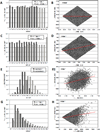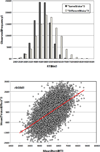Eye movements reveal fast, voice-specific priming
- PMID: 26726911
- PMCID: PMC4755801
- DOI: 10.1037/xge0000135
Eye movements reveal fast, voice-specific priming
Abstract
In spoken word perception, voice specificity effects are well-documented: When people hear repeated words in some task, performance is generally better when repeated items are presented in their originally heard voices, relative to changed voices. A key theoretical question about voice specificity effects concerns their time-course: Some studies suggest that episodic traces exert their influence late in lexical processing (the time-course hypothesis; McLennan & Luce, 2005), whereas others suggest that episodic traces influence immediate, online processing. We report 2 eye-tracking studies investigating the time-course of voice-specific priming within and across cognitive tasks. In Experiment 1, participants performed modified lexical decision or semantic classification to words spoken by 4 speakers. The tasks required participants to click a red "x" or a blue "+" located randomly within separate visual half-fields, necessitating trial-by-trial visual search with consistent half-field response mapping. After a break, participants completed a second block with new and repeated items, half spoken in changed voices. Voice effects were robust very early, appearing in saccade initiation times. Experiment 2 replicated this pattern while changing tasks across blocks, ruling out a response priming account. In the General Discussion, we address the time-course hypothesis, focusing on the challenge it presents for empirical disconfirmation, and highlighting the broad importance of indexical effects, beyond studies of priming.
(c) 2016 APA, all rights reserved).
Figures



Similar articles
-
Thinking fast and slow about words and voices: RT-distributional analyses of voice-specific priming in auditory word recognition.J Exp Psychol Learn Mem Cogn. 2021 Mar;47(3):455-465. doi: 10.1037/xlm0000952. Epub 2020 Oct 1. J Exp Psychol Learn Mem Cogn. 2021. PMID: 33001699
-
The onset and time course of semantic priming during rapid recognition of visual words.J Exp Psychol Hum Percept Perform. 2017 May;43(5):881-902. doi: 10.1037/xhp0000377. Epub 2017 Feb 23. J Exp Psychol Hum Percept Perform. 2017. PMID: 28230394 Free PMC article.
-
L1 and L2 Spoken Word Processing: Evidence from Divided Attention Paradigm.J Psycholinguist Res. 2016 Oct;45(5):1247-64. doi: 10.1007/s10936-015-9406-y. J Psycholinguist Res. 2016. PMID: 26643309
-
Effects of Auditory and Visual Priming on the Identification of Spoken Words.Percept Mot Skills. 2017 Apr;124(2):549-563. doi: 10.1177/0031512516684459. Epub 2016 Dec 26. Percept Mot Skills. 2017. PMID: 28361660
-
Specificity of memory representations for spoken words.Mem Cognit. 1998 Jul;26(4):708-15. doi: 10.3758/bf03211391. Mem Cognit. 1998. PMID: 9701963
Cited by
-
Specificity and generalization in perceptual adaptation to accented speech.J Acoust Soc Am. 2019 Jun;145(6):3382. doi: 10.1121/1.5110302. J Acoust Soc Am. 2019. PMID: 31255164 Free PMC article.
-
Structural white matter connectometry of word production in aphasia: an observational study.Brain. 2020 Aug 1;143(8):2532-2544. doi: 10.1093/brain/awaa193. Brain. 2020. PMID: 32705146 Free PMC article.
-
Rapid adaptation to foreign-accented speech and its transfer to an unfamiliar talker.J Acoust Soc Am. 2018 Apr;143(4):2013. doi: 10.1121/1.5027410. J Acoust Soc Am. 2018. PMID: 29716296 Free PMC article.
References
-
- Abercrombie D. Elements of general phonetics. Chicago: Aldine Publishing Co; 1967.
-
- Allen JS, Miller JL. Listener sensitivity to individual talker differences in voice-onset-time. Journal of the Acoustical Society of America. 2004;115:3171–3183. - PubMed
-
- Allopenna PD, Magnuson JS, Tanenhaus MK. Tracking the time course of spoken word recognition using eye movements: Evidence for continuous mapping models. Journal of Memory and Language. 1998;38:419–439.
-
- Altmann GTM, Kamide Y. Incremental interpretation at verbs: restricting the domain of subsequent reference. Cognition. 1999;73:247–264. - PubMed
Publication types
MeSH terms
Grants and funding
LinkOut - more resources
Full Text Sources
Other Literature Sources

